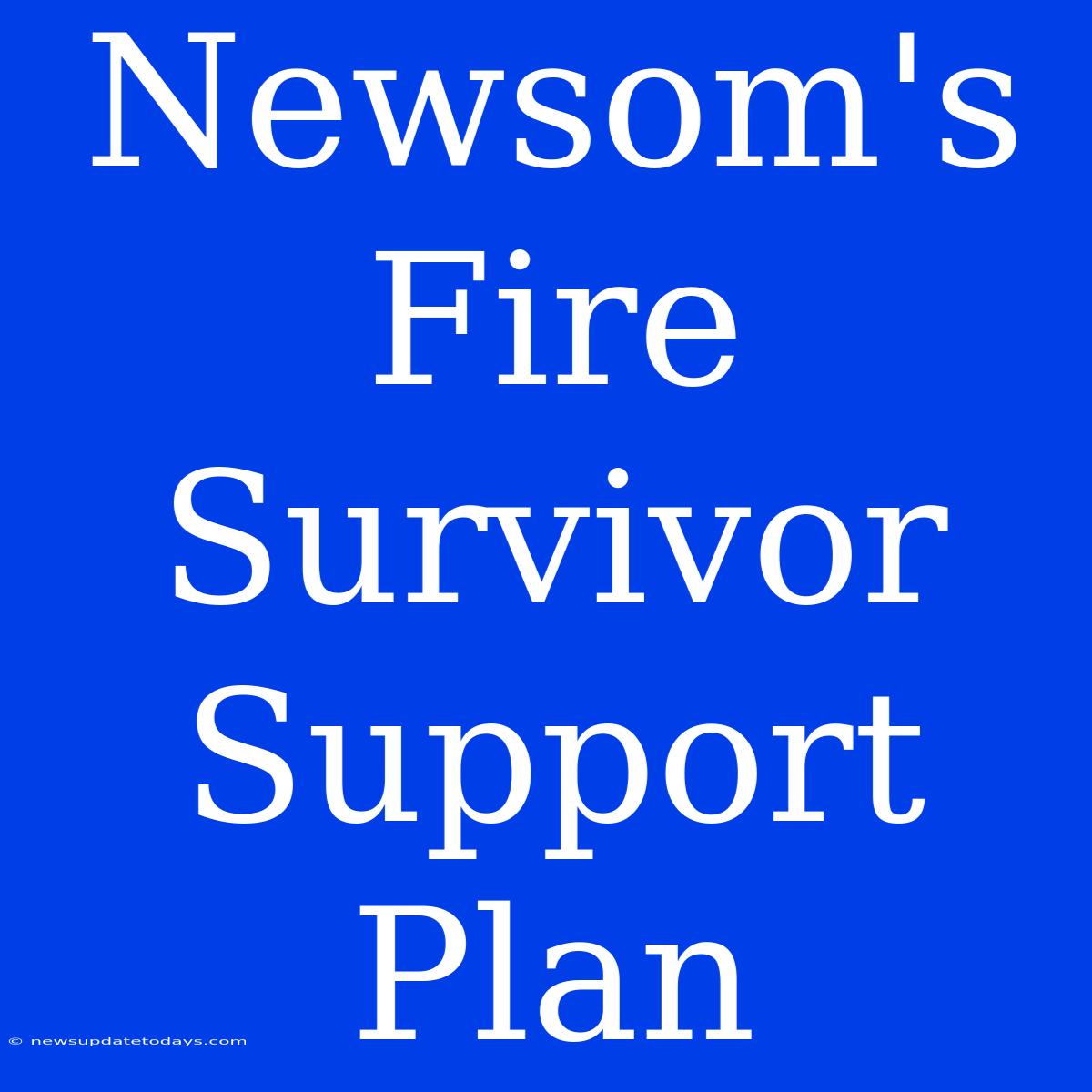Newsom's Fire Survivor Support Plan: A Comprehensive Overview
California Governor Gavin Newsom has implemented a multifaceted support plan aimed at assisting survivors of devastating wildfires. This plan addresses immediate needs, long-term recovery, and preventative measures to mitigate future wildfire impacts. Understanding the scope and details of this plan is crucial for both survivors and those seeking to contribute to recovery efforts.
Immediate Needs: Addressing the Urgency
The initial focus of Newsom's plan centers on providing immediate relief to fire survivors. This includes:
- Emergency Housing: Securing temporary housing options, ranging from hotels and motels to temporary shelters and travel trailers. The plan prioritizes housing those most vulnerable, including the elderly, families with young children, and individuals with disabilities.
- Financial Assistance: Providing grants and loans to cover immediate expenses such as food, clothing, medical care, and temporary housing costs. The availability and accessibility of these funds are key elements of the plan's success.
- Disaster Relief Centers: Establishing easily accessible centers providing essential services like counseling, legal aid, and assistance with insurance claims. These centers act as central hubs for information and support.
- Health and Wellness Support: Offering mental health services and access to medical care for physical injuries sustained during the fires or resulting from smoke inhalation and other related health issues.
Long-Term Recovery: Building Back Stronger
Beyond immediate relief, Newsom's plan emphasizes long-term recovery strategies:
- Home Rebuilding Assistance: Providing financial and technical assistance for rebuilding homes and restoring properties. This includes navigating complex insurance claims, securing permits, and accessing reconstruction loans.
- Infrastructure Repair: Restoring essential infrastructure such as roads, bridges, utilities, and communication networks. This is crucial for facilitating the return of communities and resuming normal life.
- Economic Recovery: Supporting local businesses and creating job opportunities to stimulate economic growth in affected areas. This includes grant programs and tax incentives to aid business recovery.
- Community Revitalization: Initiatives aimed at rebuilding community spirit and social cohesion, including community events, social support programs, and long-term mental health services.
Preventative Measures: Mitigating Future Risks
Recognizing the cyclical nature of California wildfires, the plan also includes preventative measures:
- Forest Management: Investing in improved forest management practices, including controlled burns and thinning of overgrown vegetation. This aims to reduce fuel loads and lessen the intensity of future wildfires.
- Community Preparedness: Educating communities on wildfire preparedness, including evacuation planning, home hardening techniques, and early warning systems. This empowers residents to better protect themselves and their property.
- Climate Change Adaptation: Addressing the impact of climate change on wildfire risk, including adapting infrastructure and land management practices to better withstand extreme weather events. This is a long-term strategy vital for mitigating future risks.
Conclusion:
Newsom's Fire Survivor Support Plan represents a comprehensive approach to addressing the immediate and long-term impacts of wildfires in California. The effectiveness of this plan will depend on its implementation, accessibility of resources, and community engagement. Continuous evaluation and adaptation are vital to ensure that it effectively meets the needs of wildfire survivors and builds a more resilient future for California. For specific details and eligibility requirements, it's essential to consult official state government resources and disaster relief organizations.

